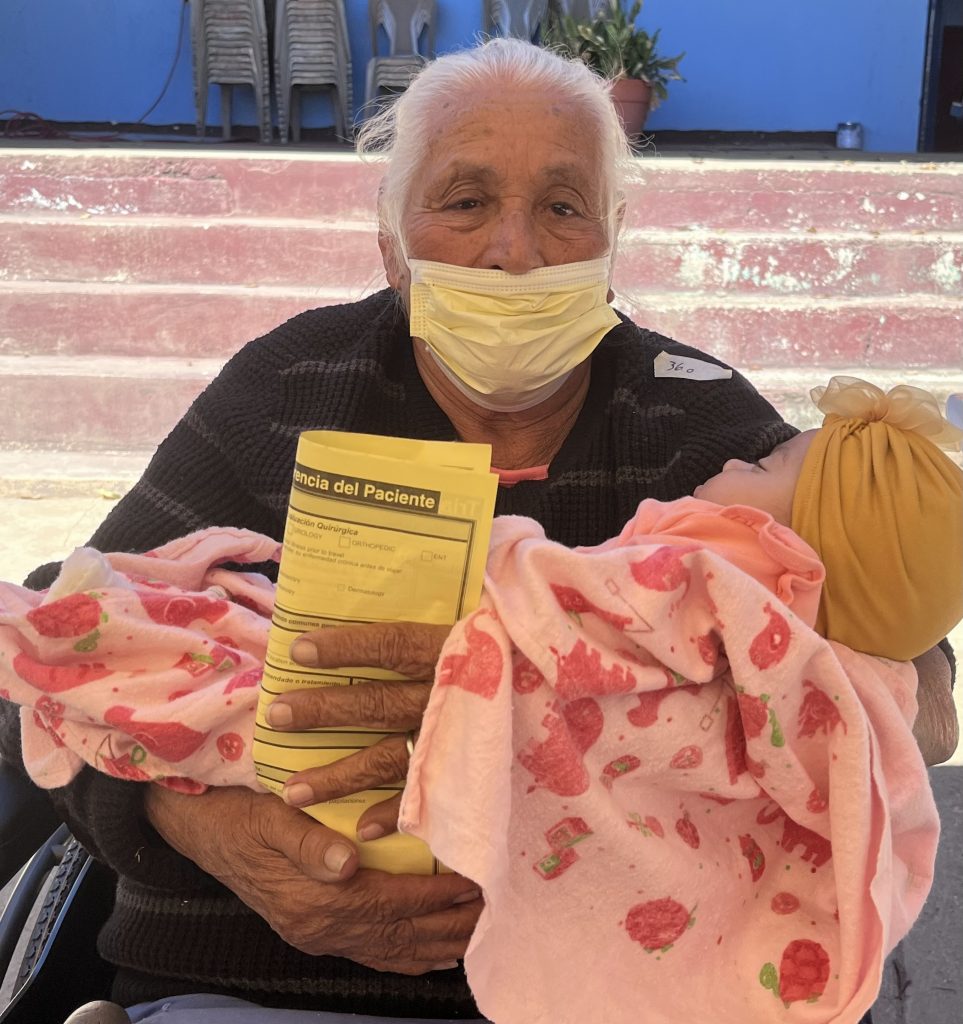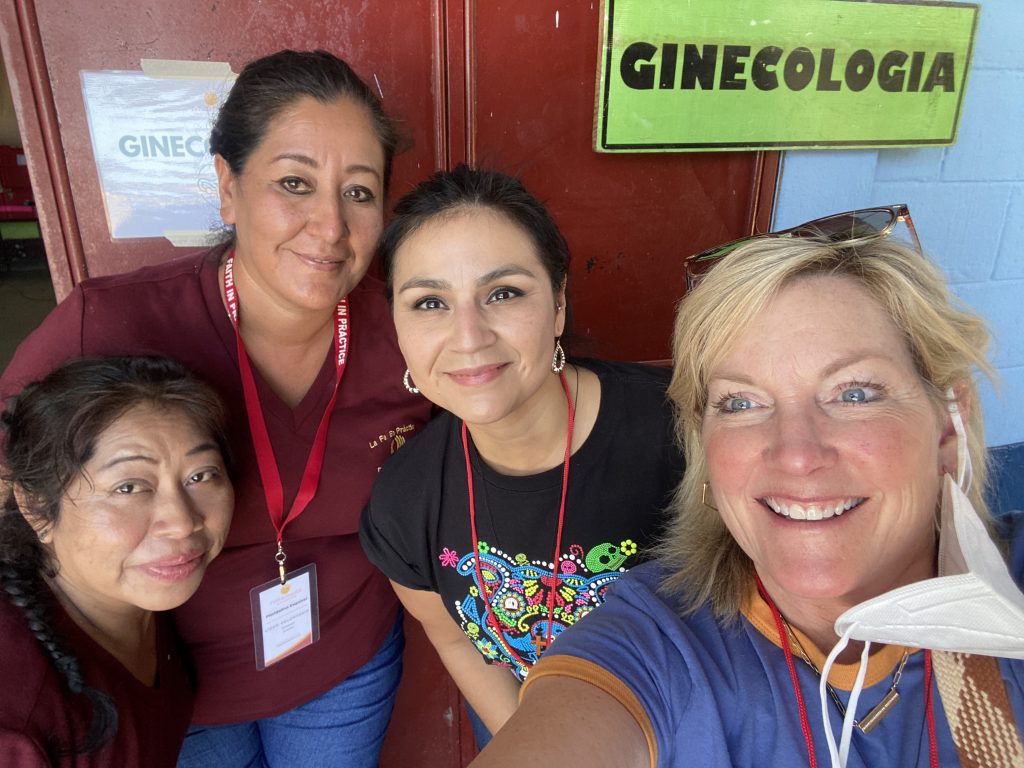5:30 a.m comes very early on a village mission trip. Groggy-eyed and lucky to come to breakfast with wet hair if the showers worked, we settle in to Christi’s devotional with wonderful insights and support for our work by Maya Angelou. A rustic but generous guatemalan breakfast of beans, ham, eggs, pancakes, fruit and coffee cake has everyone on the same wavelength as we climb on the bus for the thirty-minute ride through farm land to the clinic. People are giddy, happy to be heading into the vocation for the week, and anticipating a great day of hard work, ministry, wonderful stories, and the building lasting friendships.
We arrive to lines of patients already forming outside the school entrance—many arriving hours ago, some with sleeping children in their arms and two- and three-year-olds in tow. The welcome committee–the Red Hat volunteers and Charmelle–check them in after temperatures are taken and each patient is given a complement of vitamins. Our protocols differ a bit from past years: Community volunteers linked to Faith in Practice have been in the local community for many days interviewing and lining up the 250 patients that we will see care for each day. This pre-screening of sorts means that we are going to be seeing the patients that will most benefit from a clinic visit with us, rather than those whose milder concerns might be treated by local public health clinics. It also means that we’re likely to get a larger number of more serious and challenging cases. The first 90 patients are admitted at 8 a.m., followed by two more groups of 80 patients each in late morning and early afternoon. Cohort admissions, we believe, is going to improve our focus on patients, give more time to explore their ailments, and dedicate growing efforts to patient education. Those clinical goals are front and center in Faith in Practice’s refined work with the village teams.
Triage is an indispensable prerequisite for any patient examination. Four stations of clinicians and translators, including Chris and Hector, Kip, Lauren, and a number of our local team members, interview patients about their most important complaints, and move them on to the appropriate clinic. The included pictures give you a great sense of the anticipation of patients, the need to get to the bottom of their ailments, and the desire to do this all in a few minutes. The magical document that makes this operation flow so smoothly and efficiently is the “Triage Form.” As you can see, it’s a marvel at its efficiency! Your medical chart with your doctor back home is probably volumes long or eats up gigabytes of memory. Here, your medical history and all diagnoses, treatment and therapy recommendations, as well as referrals for further appointments and surgery are contained on this one…single…sheet. It is short, but rich in all of the important information that is needed to get these patients the care that they need.
We’ll introduce you to all of the clinics and support services soon, but today we thought we’d highlight the three main entry points for most patients: General Medicine, Pediatrics, and Ob/Gyn. Each clinic has a room, privacy curtains surrounding exam tables, and desks and chairs for intake, interviews, conversations, and patient education. Our photos bring the energy, beauty, and deep needs of everyone, especially the youngest patients we see. Carol, Octavio, Lauren, and Chris and Hector are the cornerstone of General medicine this week. Beth and Annie (our local volunteer translator) along with Mark and Mike are covering pediatrics. Christi and Teresa ably manage all of the Ob/Gyn cases, and have palatial space and shaded waiting areas that are the envy of the rest of us!
With such pressing health issues, the clinic visits can be stressful and sad moments for many patients. We can help many of them, but suffering from lack of care and serious conditions in Guatemala is no different from anywhere else. So, it’s a rare gift to be able to share a story or two with you that make our hearts glad—stories that breath new possibilities into the lives of our patients:
Twelve-year old Anderson was diagnosed with diabetes four years ago (though how this happened is anyone’s guess), and his family has been struggling to care for him, purchase needed meds on their thin budget, and cope with what they see as a lifetime of challenges for this sixth grader. Our Ped’s team saw the diagnosis as fishy, and after a glucose tolerance test, it became clear that Anderson didn’t have diabetes. The only tears of joy we saw on Monday were those of Anderson’s mom pictured next to her son, “a burden lifted from my shoulders” (as she told us) and bottles of vitamins in tow to help get her dear son back on the road to a normal life.
What a gift for us to have appear at our doors very early two patients who seemed worlds apart. A dear grandmother of 93 limped in with her walking stick—our oldest patient of the day; and the youngest person in the clinic today (a two-month-old little girl) was brought in by her mother. It didn’t take much to convince our patients and their families that a shared picture of these two special human beings was destined for this blog! Their, age, smile, innocence, and the beauty of being alive in this time and place told us everything we needed to know about why it’s a blessing to be working down here in Guatemala.
-Joel Zimbelman
To support this team and their commitment to our patient’s visit:





























